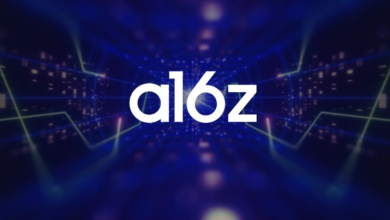The Role of Web3 in Space Exploration


For a long time, humans have been driven by the unrelenting curiosity to explore what lies beyond our world. Since the ahead days, technology has always been the backbone of progress in space exploration. Each generation offers new tools that reshape how we imagine, fund, and execute our missions.
However, a new digital revolution is unfolding – Web3. It is built on the principles of transparency, decentralization, and user ownership. Web3 represents a shift away from the centralized systems that have defined the internet’s history. It also offers possibilities that could change the space industry.
In this article, we explore how technologies can play a pivotal role in space exploration.
Key Takeaways
- Web3 introduces decentralization to space exploration, enabling open and fair participation from around the world.
- Blockchain provides transparency, security, and reliability for mission tracking and data storage.
- Smart contracts can automate transactions and space systems between machines.
- NFTs can represent digital ownership of data, satellites, or mission-related assets.
- Web3 offers a democratic, new future for space collaboration despite challenges like technological and regulatory limits.
Understanding Web3 and Its Core Technologies
Web3 is the next phase of the internet. The first version of the internet (Web1) enabled people to read information only. Next, Web2 allows people to create and share content across social media platforms. Most of the data and platforms are controlled by large companies.
Web3 changes this system. It is powered by blockchain technology, a system that keeps records open, secure, and impossible to change. Users can leverage Web3 to own their data, make secure transactions, and collaborate without the need for a middleman.
The major parts that make up Web3 include blockchain, smart contracts, Decentralized Autonomous Organizations (DAOs), cryptocurrencies, and .
The Growing Intersection Between Web3 and Space Technology
In the past, space exploration was mainly handled by government agencies like NASA or the European Space Agency (ESA). Today, private companies like Blue Origin, SpaceX, and Rocket Lab are sending rockets to the Moon. They’re also building satellites and planning space missions.
The combination of private and public efforts is creating a diverse kind of space industry that relies on teamwork, technology, and innovation. This is where Web3 begins to connect with space technology. Web3 can solve long-term challenges in space projects like funding expensive missions and sharing data securely across countries.
Here are some examples of projects that are bringing Web3 into space:
- beginups are using blockchain to monitor and manage satellites in orbit.
- Some organizations are testing decentralized networks that enable satellites to communicate without a central system.
- Others are experimenting with space-based blockchain nodes that secure and process blockchain data.
How Web3 Is Transforming Space Exploration — 7 Ways
Web3 is opening new doors for individuals to explore space. It’s assisting to make space missions shared, open, and supported by communities globally. Here are some of the primary roles Web3 plays in the growing space industry.
-
Decentralized Funding
Space exploration relied on massive budgets from governments and billionaires in the past. This made it challenging for smaller organizations, beginups, or scientists to participate. Web3 changes this through crowdfunding and decentralized finance (DeFi). People worldwide can rely on blockchain technology to contribute large or small amounts to space projects. This decentralized approach makes funding fairer, quicker, and more inclusive.
-
Secure Data Storage and Sharing
Space missions generate large amounts of data, from planet images to satellite readings. Usually, this data is stored by private companies or space agencies, which can limit access and create risks of tampering or data loss. With blockchain technology, this data can be stored in a secure, unchangeable record that any authorized individual can access.
-
Ownership Through NFTs
Web3 enables people to own or represent global assets via non-fungible tokens (NFTs). In space exploration, NFTs can represent unique mission memorabilia, shares in projects, or digital versions of space discoveries. NFTs could also represent ownership of mining rights or satellite bandwidth in future space ventures.
-
Smart Contracts
Space operations involve several complex systems that depend on trust and precise timing between diverse parties. Smart contracts, which are self-executing programs on the blockchain, can automate these processes. For instance, a smart contract can automatically pay for data transfer between satellites when the platform is complete.
-
Transparent Governance With DAOs
Most space missions require decisions from many organizations, such as private investors, research groups, and global agencies. Decentralized Autonomous Organizations (DAOs) offer a new way to make these decisions together. In a DAO, all members can vote on significant matters like how funds are used or how to handle profits. Every decision and vote is recorded on the blockchain, making the process fair and transparent.
-
Building a Global Space Community
One of the most inspiring things about Web3 in space exploration is how it connects people. Through token-based memberships, online communities, and decentralized networks, people from diverse backgrounds can participate in space projects. Therefore, space won’t be limited to a few powerful countries, because Web3 encourages global collaboration.
-
Transparent Supply Chain Management
Every satellite, rocket, and rover depends on complex supply chains with several suppliers. Blockchain can track every material used from production to launch. This prevents loss, fraud, and counterfeiting. It also improves accountability, as every step is recorded on the blockchain and visible to everyone.
Conclusion: A New Frontier for Technology and Humanity
Web3 is more than a digital trend; it is a system that redefines how we connect, create, and share value. In space exploration, Web3 has the power to change how we manage data, fund missions, and make choices as a global community. It also allows regular people to contribute to space exploration, organizations to collaborate with trust and transparency, and scientists to share freely.
While there are still challenges, the connection between is just beginning. In the coming years, we may witness tokenized satellites, decentralized missions, and DAOs making crucial decisions about life beyond Earth. The universe could become not just a scientific objective, but a shared digital frontier where everyone has a role to play.






